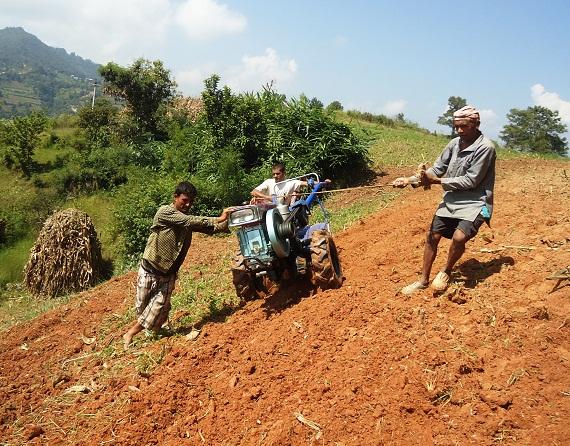HEADLINE
Climate Smart Farming Helping Earthquake-Hit Communities in Nepal
"Changes in weather patterns and especially rainfall are affecting the country’s smallholder farmers"
Shuriah Niazi

When it comes to climate change, Nepal is one of the most vulnerable countries in the world because of its high poverty rates and low adaptive capacity.
Changes in weather patterns and especially rainfall are affecting the country’s smallholder farmers – and the problem has intensified since the devastation of the earthquake this April.
But as Shuriah Niazi reports, farmers are taking the climate change challenge head on by adopting smart climate-cultivation methods.
Forty-five year old Nirbhaya Sapkota is woman farmer from Naubise village, about an hour and a half drive from the capital Kathmandu.
Along with other farmers in her village, Nirbhaya has been using smart climate cultivation methods to combat the adverse effects of climate change.
With the help of the Himalayan Climate Change Adaptation Program (HICAP), farmers are using every possible technique to maintain soil fertility and moisture through crop rotation, mixed cropping and intercropping.
Nirbhaya Sapkote says the methods are already having results since being adopted in February this year.
“Our production has increased after we started using bio-fertilizers and bio-pesticides, instead of chemical fertilizers. Apart from that, we have switched over to smart irrigation methods by collecting wastewater and rainwater in plastic ponds,” she says, “Increased production means more income for the family by selling the harvest at the market. The crops are also able to withstand fluctuations in temperature and rainfall.”
The climate smart farming initiative is supported by the International Centre for Integrated Mountain Development (ICIMOD), an intergovernmental research organization.
Through the project, farmers are provided critical information pertaining to crops through SMS notifications on their mobile phones in their own language. They also receive information about sustainable energy usage.
And a plant for biogas, produced from agricultural waste, manure and sewage, has been installed in the village so it can be used as a renewable source of energy.
Mona Shreshtha is another farmer in Daitar. She has also succeeded in increasing her output through climate smart techniques.
“We have seen that use of bio-fertilizers has had a positive impact on our yield. Our vegetable production increased after we started using bio-fertilizers, animal manure and bio-pesticide [jholmol] sourced from crop residue in our farm,” she says, “Now we no longer use chemical fertilizers. Thus our savings have also increased.”
But the earthquake this April has increased the challenge for many smaller holder farmers.
Yam Prasad Nepal no longer thinks he and his seven-member family can depend on agriculture alone. They are facing a shortage of water for farming and drinking, after water sources in the district dried up after the earthquake.
Before the earthquake the wells in the village were full of water, but now more than 100 households in the village have to fetch water from a nearby stream.
“We are waiting for water. We need water for everything, for agriculture,” he says, “for cattle…. and also for drinking. If there is no water then we cannot survive. We don’t know what will happen to us.”
The earthquake has taken its toll on almost every family in the village.
Forty-five-year old Laxmi Prasad Adhikari is now looking for work as a labourer in the Gulf. His family of four is finding hard to survive.
“We suffered a lot during earthquake. My house was damaged,” he explains, “ I even lost two of my cattle. Earlier, I used to sell 16-17 liters of milk every day. Now I am left with only 4-5 liters.”
To deal with the tough times, people in the village are now expanding on their climate smart knowledge, moving toward new agriculture practices that require less water.
The Centre for Environmental and Agricultural Policy research (CEAPRED), a Nepal-based NGO, has provided a new variety of rice paddy to farmers, which uses less water and fertilizers.
Yam Prasad Nepal hopes it will be successful.
“In the village we have received Charuva, a new variety of paddy, which is showing impressive results with less water,” he says, “We are waiting for the final outcome. We hope to grow this variety of paddy as we are left with no water.”
But with current conditions, it’s still a long road ahead for Nepal’s farmers.
- eng
- Shuriah Niazi
- smart climate cultivation methods
- Nepal farmers
- Nepal earthquake
Komentar
KBR percaya pembaca situs ini adalah orang-orang yang cerdas dan terpelajar. Karena itu mari kita gunakan kata-kata yang santun di dalam kolom komentar ini. Kalimat yang sopan, menjauhi prasangka SARA (suku, agama, ras dan antargolongan), pasti akan lebih didengar. Yuk, kita praktikkan!